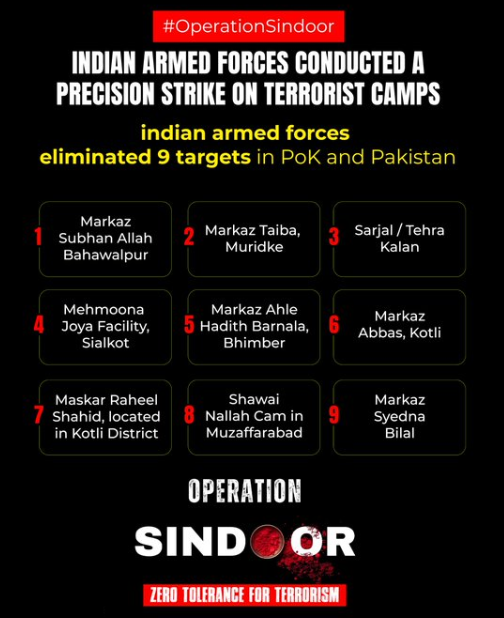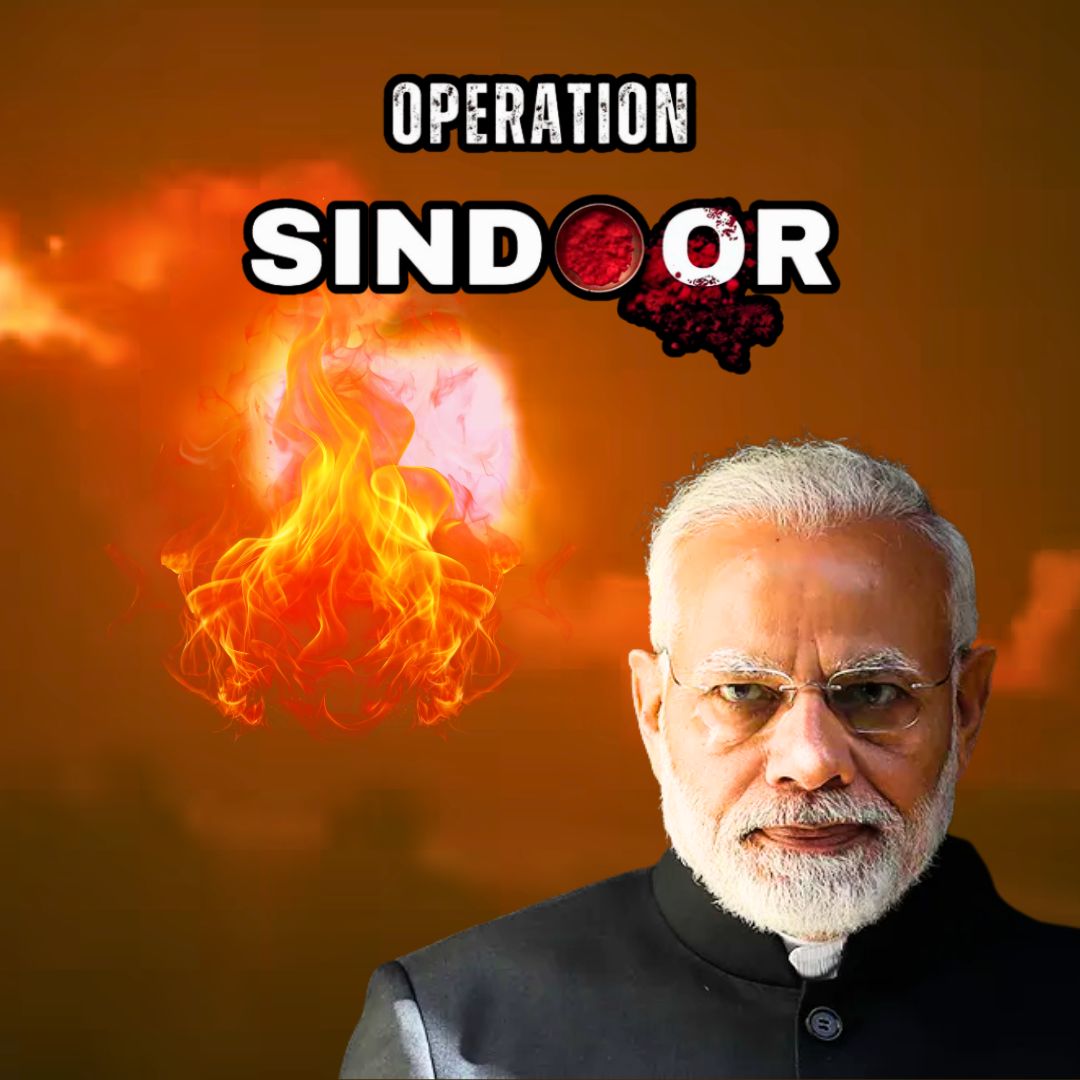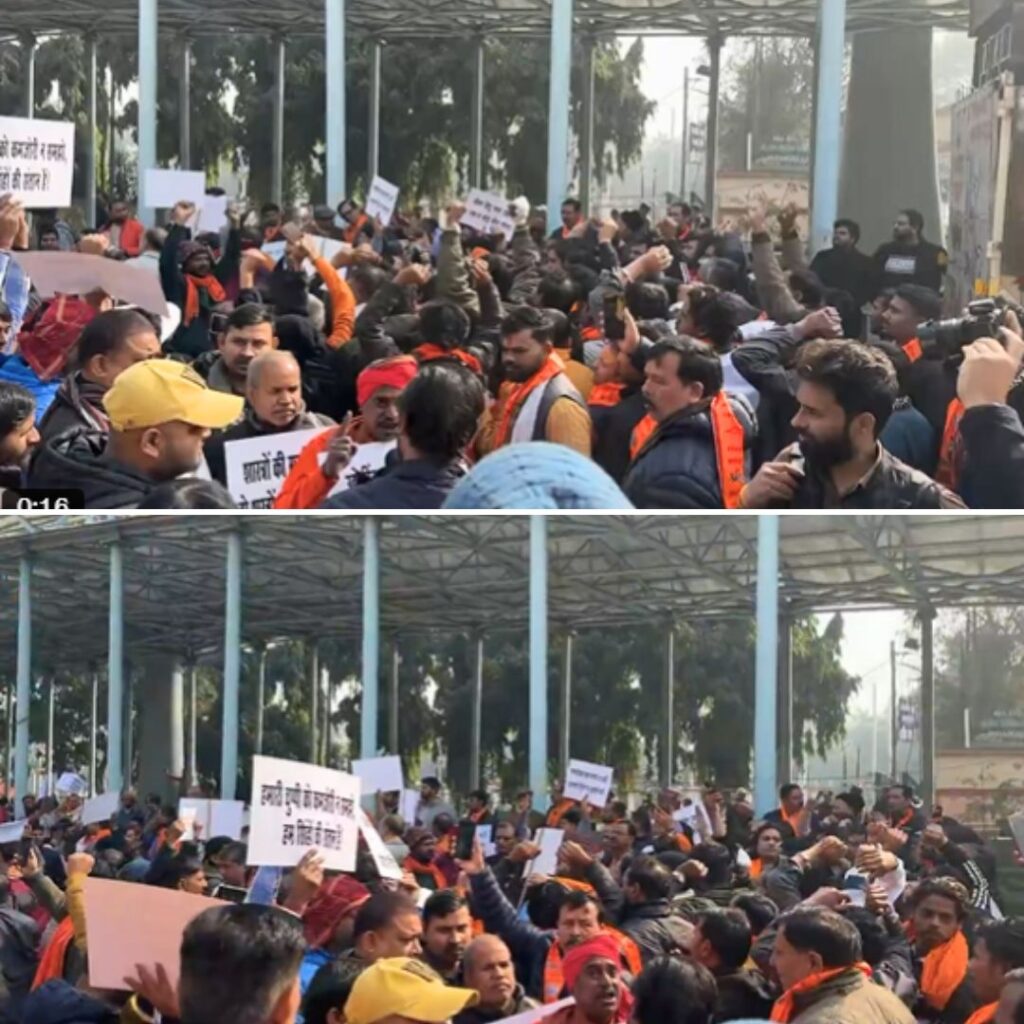In the early hours of May 7, 2025, India launched Operation Sindoor, executing 24 precision missile strikes on nine terror camps across Pakistan and Pakistan-occupied Jammu and Kashmir (PoJK). This military action was a direct response to the April 22 Pahalgam terror attack that killed 26 civilians, mostly tourists.
The strikes targeted terror infrastructure linked to Lashkar-e-Taiba, Jaish-e-Mohammed, and Hizbul Mujahideen, reportedly 70+ killed and wounding more than 60. India emphasised the strikes were focused, measured, and non-escalatory, deliberately avoiding Pakistani military facilities.
Pakistan confirmed civilian casualties and claimed to have shot down five Indian fighter jets, a claim India has not confirmed. Prime Minister Narendra Modi monitored the operation closely, while Indian officials warned of continuing terror threats from Pakistan-based groups.
Operation Sindoor: Five Key Points
- Precision Missile Strikes on Nine Terror Camps:
Indian armed forces carried out 24 missile strikes on nine terror infrastructure sites in Pakistan and PoJK, including locations such as Muzaffarabad, Bahawalpur, Muridke, Kotli, Rawalakot, and Chakwal. These camps serve as strongholds for terror groups Lashkar-e-Taiba and Jaish-e-Mohammed, functioning as training and arms storage centres. - Significant Terrorist Casualties and Degradation of Capabilities:
Over reportedly 70+ were killed and more than 60 wounded, substantially degrading the operational capabilities of the targeted terror groups. The strikes were carried out with advanced precision weapons like SCALP cruise missiles and HAMMER bombs to minimise collateral damage. - Measured and Restrained Military Action:
The Ministry of Defence stressed that no Pakistani military facilities or civilian infrastructure were targeted, reflecting considerable restraint. The operation lasted approximately 25 minutes starting at 1:44 AM, and was designed to avoid civilian casualties, though Pakistan reported some civilian deaths and injuries due to retaliatory shelling. - Pakistan’s Response and Claims:
Pakistan confirmed that three locations were hit and claimed to have shot down five Indian fighter jets, a claim India has neither confirmed nor denied. Pakistani forces responded with artillery shelling across the Line of Control, killing at least 10 civilians, including children, on the Indian side. India responded proportionately to these violations. - Evidence of Terror Links and Ongoing Threats:
Indian officials, including Foreign Secretary Vikram Misri, stated India possesses credible evidence linking Pakistan-based terrorist groups-including Lashkar-e-Taiba, Jaish-e-Mohammed, Hizbul Mujahideen, and The Resistance Front-to the Pahalgam attack. Misri also revealed Pakistan pressured India to omit references to The Resistance Front from official statements. Intelligence inputs warn of possible further terror attacks, underscoring the need for vigilant security measures.
Background and Context
Operation Sindoor was launched as a direct and decisive response to the brutal Pahalgam terror attack on April 22, which claimed 26 lives, mostly tourists. The operation marks one of India’s most extensive precision strikes across the border since 2019, signalling a strategic shift towards dismantling terror infrastructure at its source while maintaining calibrated restraint to avoid escalation.
Prime Minister Narendra Modi personally monitored the operation throughout the night. The strikes came hours before a nationwide civil defence mock drill, underscoring India’s preparedness. The United Nations has called for maximum restraint from both India and Pakistan amid rising tensions.

The Logical Indian’s Perspective
While India’s right to defend its citizens and sovereignty is undeniable, The Logical Indian reiterates that military action alone cannot resolve the deep-rooted conflict in Kashmir or the cycle of violence between India and Pakistan.
The loss of civilian lives on both sides is a tragic reminder of the urgent need for sustained dialogue, empathy, and peaceful coexistence. We urge leaders from both nations to prioritise diplomacy and constructive engagement to break the cycle of retaliation. How can India and Pakistan move beyond military responses to build lasting peace and security for their people?
#WATCH | "4 drones came…panic everywhere", says local in Pakistan's Muridke, giving an eyewitness account of India's Operation Sindoor against terror targets
— ANI (@ANI) May 7, 2025
A local says, "At around 12:45 in the night, first one drone came, followed by three other drones, and they attacked… pic.twitter.com/BUsQ1h31RR












